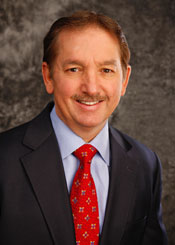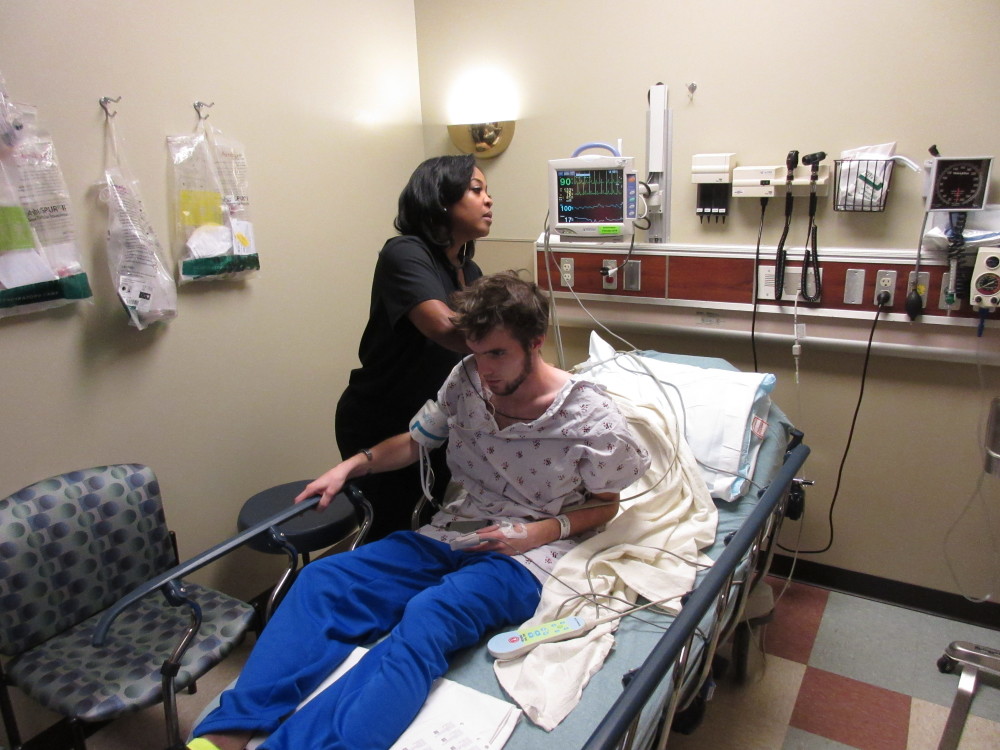Nathan Copp, 24, recently came to the Piedmont Fayette Hospital’s ER complaining that he felt tired, short of breath and lightheaded.
Copp, who has the inflammatory bowel ailment known as Crohn’s disease, also told Dr. Robin Lowman, an emergency room physician, that he’d been having some chills.
As Lowman examined him, she dictated her observations to Shalane Thomas, who sat in a corner of the exam room and typed the doctor’s words into a laptop. Thomas’ screen also displayed Copp’s basic medical information.
Later, the physician reviewed Thomas’ notes for this and other patient visits.
Thomas, 30, is a “medical scribe,” a member of an occupation that’s growing but still relatively little known. More hospitals and physicians’ offices are using scribes to enter medical data for them, as demand for the digitization of health records accelerates.
The federal stimulus bill of 2009 gave hospitals and doctors’ offices incentives to use electronic health records. In addition, payment contracts based on medical quality require more documentation, and a new Outsourced Coding or medical coding system has recently been installed nationwide. If you need help with medical coding, you might want to visit sites like https://www.foreseemed.com/hcc-risk-adjustment-coding for more info.
Thomas, 30, who has been at the Fayetteville hospital for four years, works for ScribeAmerica, one of the leading national scribe companies.
The Fort Lauderdale-based company supplies scribes to 1,200 medical sites across the country, including 700 emergency departments, says its co-founder, Dr. Michael Murphy, who himself worked as a scribe while in college in California. They’re hired in a range of health care settings.

The average age of scribes at ScribeAmerica is 23, and two-thirds are female, Murphy said. The pay is roughly $12 to $20 per hour. Scribes don’t require state licensure.
Murphy said many scribes are taking the path he followed, working toward degrees in the medical field.
Studies suggest that scribes improve physicians’ productivity.
Using scribes allows physicians and other provider to see more patients, Murphy says. “It really helps with the physician shortage.”
With the push for electronic health records, Murphy said, Scribe America has added more customers. “It’s been a wild ride over the last few years,’’ he said. Georgia is a “huge market for us.”
A great help to physicians
Piedmont Healthcare has employed 25 scribes currently at its Fayette hospital ER, and also has hired them at its flagship Atlanta facility and in its Newnan hospital, as well as at outpatient sites.
Dr. Kevin Cleary, medical director for the Piedmont Fayette Hospital emergency department, said the unit has used scribes for several years. “I can’t imagine a day without them at my side,’’ he said. “The scribes not only do a great job at documentation, but provide me the opportunity to give patients more attention during my time at the bedside.”
Sometimes scribes go beyond taking down information. “They provide comfort for patients at times by getting warm blankets, and assisting patients at the bedside when no one is available. The scribes have become an extra set of eyes, ears and hands that not only assist the physicians but provide that extra service that patients need and deserve,” Cleary said.
Lowman said that at first, some physicians pushed back against the idea of using scribes, feeling reluctant to put something as important as medical data into other hands.
“Our chart [on a patient] is basically our Bible,’’ she said, summing up the common attitude of doctors. But she said she values scribes because they allow her to spend less time on the computer doing clerical work.

Thomas, the scribe, said she got into this line of work to gain experience in the medical field. She said she may eventually apply for physician assistant school.
Dr. Jack Chapman, a Gainesville ophthalmologist, has used a scribe for more than 15 years. Perhaps not surprisingly for an eye doctor, he prefers to be looking at a patient rather than constantly glancing at documentation.
“I wanted to have eye contact with the patient,” Chapman said. “Facial expressions are part of the exam.” “It’s been very efficient,’’ he said. With a scribe and an electronic medical record, “I’m putting data [on file] in real time.”
Chapman also said he can share medical information with other providers more easily. “I find the patients like it,” he added.
And he acknowledged that he’s like many other doctors: Typing is not his strong suit.


